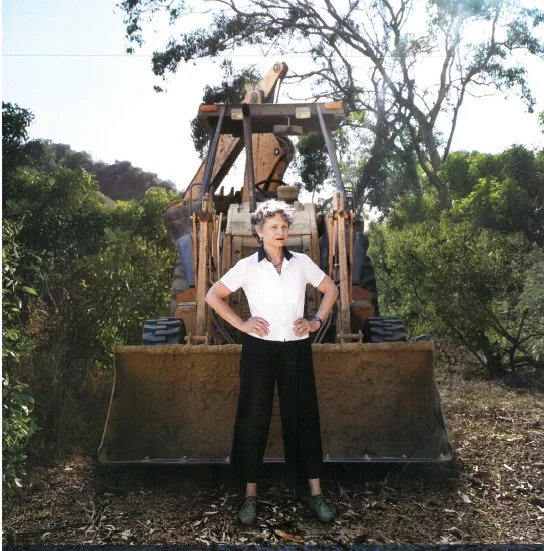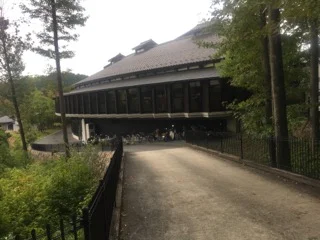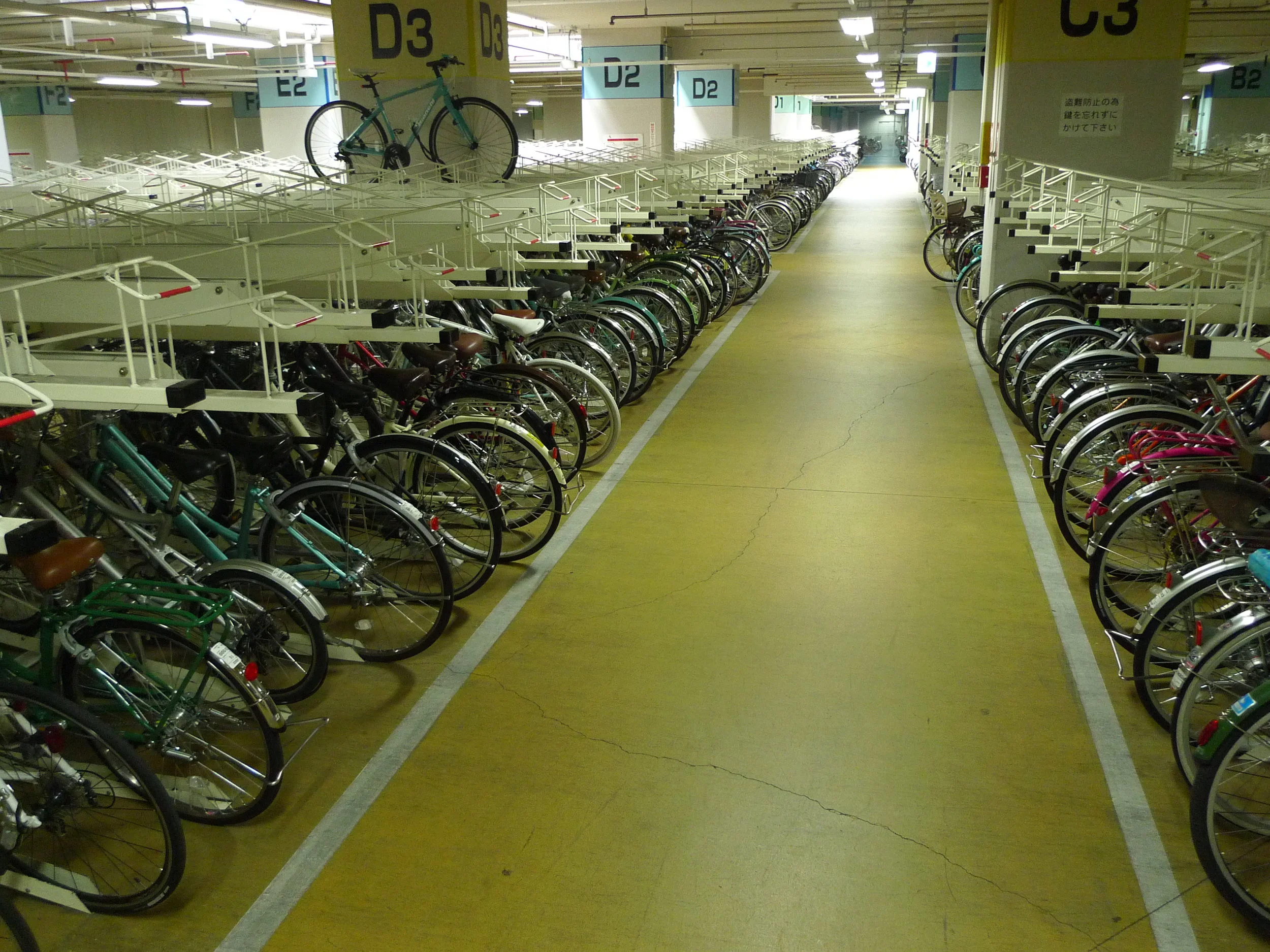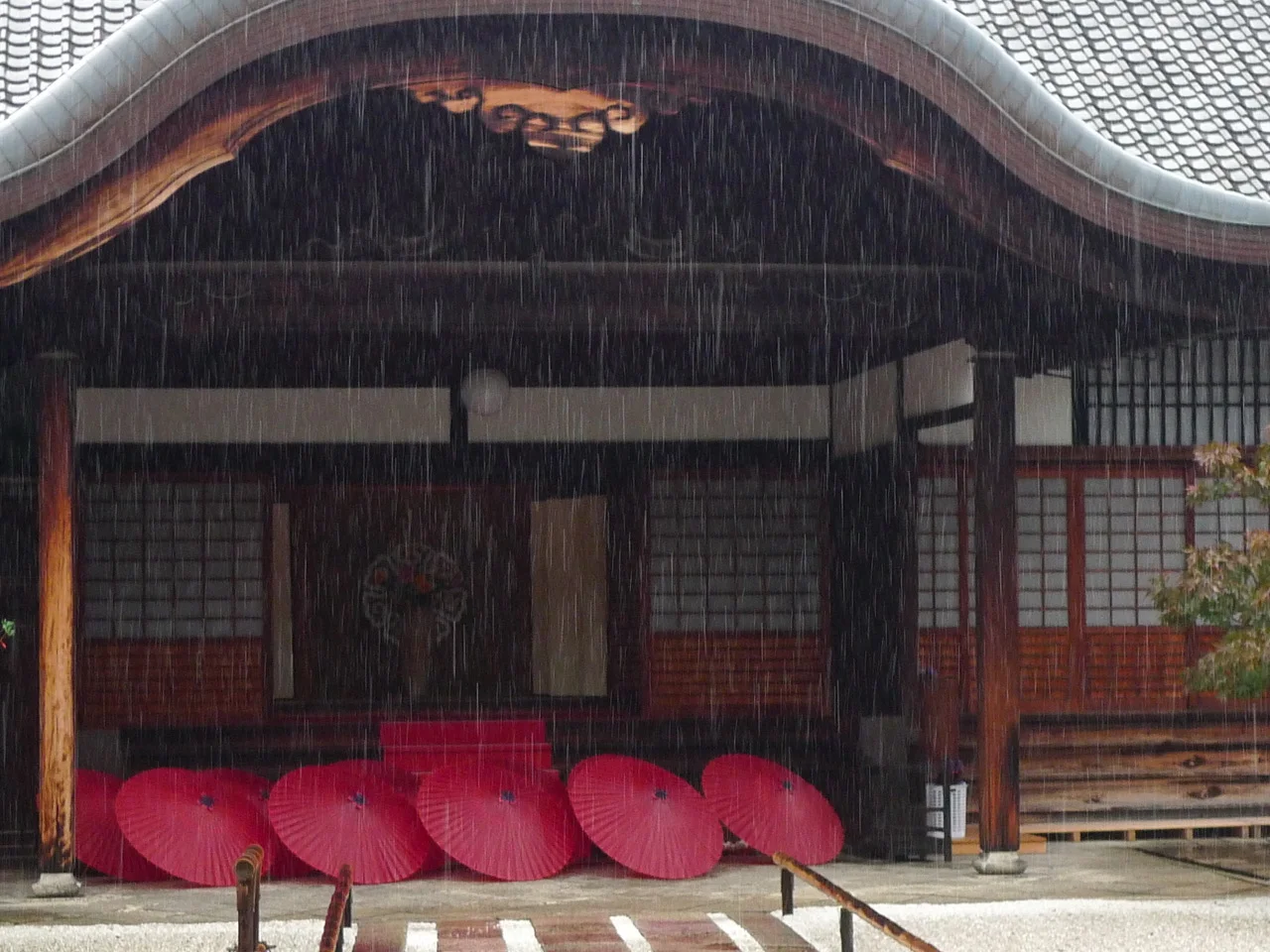Kyoto Diaries - 6
Thursday in Kyoto woke up to wintry scene, soft big snow flakes falling; a thin covering of snow on the ground, branches, roofs and fields. A break in the low sky revealed Mt Hiei covered with white. Precipitation has turned to cold rain and the snow has melted. What a beautiful few hours.
I went to visit 3 Sake breweries last week. One was a very big industrial brewery, but that has a lovely museum that displays the old Sake making equipment and has illustrations and photographs of the laborious, precise and time-consuming process. We tasted a few Sakes there, and then off to the next brewery where we did a back-scenes visit. But first we went to a fountain where you could drink the water they use in this area’s Sake making. It is a very soft water, that fills the mouth. In the Kyoto-Osaka area the ground water table is very high and the quality – at least in the North-Eastern reaches – is renowned. Sake is 80% water, so the quality of that water is enormously important, as well, of course, as the rice. But there is so much more. Sake seems quintessentially Japanese in the high level of intensity of the processes. Each step involves important timing, heat, mixing and pressing/straining.
1. Milling the rice involves removing the husk, but this has to be done gently so as to not heat the rice or break the kernel. Rice is milled to different degrees- up to 70& of the rice can be milled away!- and this yields subtle differences in flavor (and grades of Sake) in the end due to the surface area of the rice that is left.
2. The rice is washed and soaked. The higher the polish the less time is devoted to soaking and washing. It is then laid out to dry on the cloths on the ground.
3. The rice is then steamed in big vats with the heat coming from the bottom, working its way up through the rice.
4. Koji, a fungus that makes enzymes that convert starches into sugars that can be fermented by yeast (the malting process) – is spread on the rice.
5. The Moto of Subo -- Yeast is then added to the malted rice. This yeast is a cultivated and specifically selected strain, (just as Kogi is) this is not ‘wild’ yeast. And different Sake makers utilize different yeasts.
6. Moromi is the main mash and the mash sits a certain period of time, stirred once a day, and in the artisanal breweries, this is still done by hand using a long wooden paddle. Of course, this must be done precisely.
7. Pressing. The brew is pressed (now through charcoal filters pushed together by a hydraulic piston). And there are different degrees of pressing and clarity that result. The first pass through is different than the Sake at the end of the process. The lees themselves can be used in cooking and are of different grades. Most get transformed into animal feed, a slightly alcoholic, very nutritious cake.
Sake can be pasteurized or unpasteurized, young or old. Most Sake is youngish and pasteurized. The unpasteurized Sake changes over time, it is alive.
Different regions of Japan grow different Sake rice, each with its own known qualities, yielding, in part, the distinctive differences in Sake (though to an outsider, it would be challenging to ascertain the region of provenance!).
What comes to mind, of course, is the contrast between Sake and wine. Somehow, Sake is another expression of the fierce engagement with nature of the Japanese. Wine is so much simpler in a way, also much less predictable and more wild. The yeast is from the grape skin itself, it is not introduced or selected. The grape has its own sugar. Like rice, of course, there is the variety of fruit, the importance of the soil and growing conditions, the weather. But after that, Sake making diverges and has many steps where there is choice and control, from the degree of milling (which affects how long the rice is soaked to much surface area there is for the Koji and Moto to operate on), to the choice of the yeast, the amount of heat and its pasteurization.
Sake has a somewhat viscous or syrupy consistency. It can be sweet or dry, minerally or more fruity, light or dense, white or more yellow, and even milky, bitter and taste fermented.
The second brewery was a smaller, hybrid artisanal/industrial brewery that specialized in utilizing only rice grown in and around Kyoto. Machinery now takes the place of people in some of the processes, but the rice, once washed is still laid out on the floor on fabrics to dry. The brewery was 3 stories, we started where the rice is hulled, washed, spread out to dry, and then steamed on the third floor. It then is mixed with the Koji and Moto, and ferments. Floor 2 it is pressed and the lees are produced. We had the chance to taste ones destined for animal food. Delicious, slightly alcoholic wafers. Floor 1 was the bottling operation.
We then got to taste nearly a dozen Sakes, bewildering variety of tastes and intensities. From the very expensive and rather rare, to the street variety and unpasteurized fresh Sakes. Still, I am not sure that the most expensive would be the most attractive to drink with a meal. From there we walked – under freezing rain for which I was not prepared – to the final brewery, a small artisanal affair producing a limited number of bottles. There we, thankfully since I was so cold, sat at a bar over looking the brewery, and drank yet more Sake, and had a bite to eat. What a day!!!
On Friday I went to see the temple with 1,000 Buddhas in Kyoto, a well-known site. Built in around 1250, it is truly awe-inspiring. The temple site is surely a shadow of the grounds that it must have originally encompassed, but it was still grand. Surrounded by a wall made in portions of mud and rice-hulls and stock, other parts were built of wooden slats painted a vibrant grassy green and brilliant cinnabar red. The temple itself is 100 meters long and built of huge timbers (that existed much earlier in Japan, unlikely to be found today, or for the past 250 years). All wood, but a tile roof. Inside there is a long corridor and to the right are 1,000 wood carved, intricate Buddhas that are gold gilded and with multiple arms and symbolic features attached. Skulls, lotus flowers, flowers, symbols of many types, probably 10 rows high, and each Buddha 5 feet tall. In the center is a giant Buddha maybe 20 feet tall (imagine what the height of the temple ceiling must be), serene in the middle of all his surrounding Buddhas. Across the front were a number of specific personages carved in wood, each at least 5 feet high, with crystal inset eyes, part of the religious Buddhist iconography, derived in part from the Indian deistic influences on Buddhism. Remarkable to think that this man, Gotama Buddha, who was far from a God in his time, 600 years later has become deified and worshiped in such an imposing and spectacular temple. Along the front there are tall sliding shoji screen doors protected against the elements by giant wooden doors. Breathtaking all in all.
Perhaps I did not mention there is no street parking in Kyoto or nearly any other city I visited in Japan. Zero. People pay to park in parking lots, and it can be expensive. There is no free parking in town; many people simply do not have cars. Streets vary from 5 feet wide and up, service vehicles are scaled appropriately, even fire trucks are slimmer and smaller. Mail is delivered by bike messengers and by scooters, and they are fast and efficient. Delivery trucks are smaller and more nimble. Clearly, at one time, space was at a premium and there was little other power than human labor. Cities are built more compactly. Today you can see much bigger houses being built at the edge of town, or infill on former rice fields and vegetable fields. These houses are quite ugly, clad in plastic coatings with no character and on a western template – and big. Even if more modern, houses in Japan are extraordinarily energy inefficient, it’s quite shocking actually. No good insulation requirements, no central air or heating – both of which are useful in the extreme climates of Japan. So people huddle around portable gas (or kerosene) heaters or under their heat pump heater/ac units. Zonal heating is the norm. Not a bad thing if there is better construction. Why heat rooms where there is no one? But Japanese residential HVAC is notoriously poor. One can wonder if this zonal approach is a vestige of old construction where rooms were heated only when used, and many were not heated in any way at all, like sleeping rooms. Older houses were a mix of open air and walled or screened rooms. They were cold.
One thing that should be remembered about Japan is that it never experienced major invasions. There were internal, internecine wars among the lords until the Tokugawa period, but unlike Europe whose national and provincial frontiers and boundaries changed overtime depending on the invading group or nation, Japan was and has been, largely Japan. I think this makes a big difference and shapes the county’s deep historical patterns and sense of itself. Imagine the still cultivated 1,300 year old rice paddies in the Noto Peninsula! I don’t know about China or other East Asian nations, but Japan seems to have been spared the worse of impacts of invasion, genocide, ethnic cleansing and appropriation by other nation states, tribes or provincial powers. Of course this does not mean there were no wars, that there is no racialization among the Japanese, and that all was peace and harmony. But it does mean that the long historical memory in Japan, the practices, traditions and sense of place and practice, has not been as interrupted as many other places on the planet.
I am intrigued by what knowledge about place and practices of place; Japan may have to offer the rest of us who are more uprooted and context free. We have more liberty to innovate, perhaps, less concern with form and conforming to patterns and rules. But that also means less concern with maintaining social solidarity, which may require curbing one’s own rights, and desires in order to ensure the commonweal. How we reconcile these tensions in a democratic system, especially in the U.S., are among the most serious challenges we face. There needs to be a shift in values to think of the impact of one’s actions on others and on social organization and costs to the greater good. Just a small example are my neighbors here back in L.A. sweeping the sycamore leaves out into the street leaving them for others – presumably the street sweeper – to deal with rather than going to the trouble of putting them in the green bin for composting. And what about trash pickup for all the homeless encampments? Wouldn’t that make sense? So much we could do to further our common well being (how about no more parking requirements for new apartments and the construction of neighborhood parking garages that people pay for?) so that new construction is less expensive and we can house more people?
I stop there before this Kyoto Diary gets turned into a rant.
Thank you for reading. Comments, conversations welcome.






